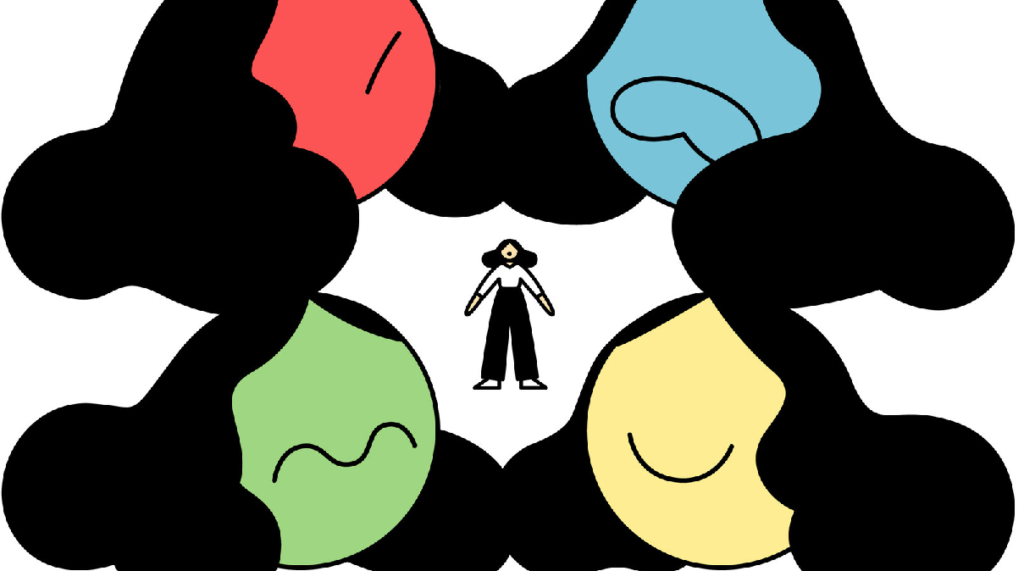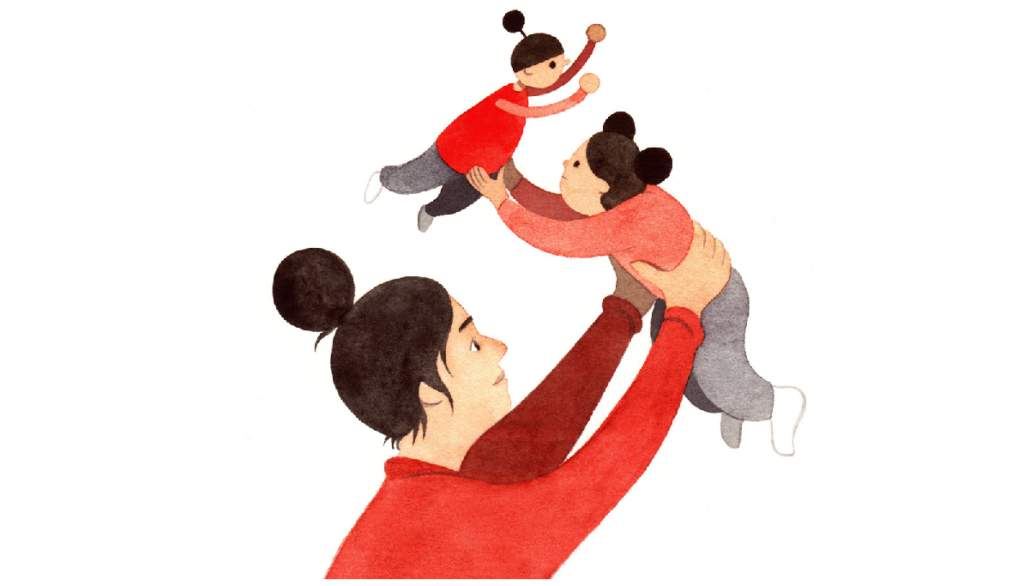Parents and Attachment Styles
A friend broke up because her partner was too clingy. “ I am not used to so much affection all the time”, she told me later. That same day another friend seemed upset because her “daddy issues” makes her choose the wrong partners. A few days later, people went gaga over Corpse as he sang “Ain’t no daddy issues, then I won’t even bother”.
A lot of people find it very convenient to blame their mommy and daddy issues for who they attract and are attracted to. But what are the issues really?
We tend to find comfort in everything familiar and that sense of familiarity is therefore what we seek. It’s no different with our attachment types. Most of our adult relationships echo the kind of bond we had formed with our primary caregiver in the days of our early childhood. It might therefore help to look back a little and start our process of understanding from there.

Parenting Styles
It is fair to say that there is no prescribed style of parenting. It’s more of a freestyle technique that is further moulded by one’s upbringing, cultural background, and one’s perception of parenting. We have all been brought up in such different yet similar ways. Some of us have even seen shifts in the way our parents/caregivers deal with us. However, listed below are some of the most recognized styles of parenting.
- Authoritative Parenting: involves setting clear boundaries and definitive rules. Parents with this style have somewhat reasonable expectations from their children and engage in healthy communication.
- Authoritarian Parenting: involves very strict rules failure to adhere to which often calls for punishment. Authoritarian parents have very high expectations from their children and also do not engage in many open conversations with their children.
- Permissive Parenting: is more about flexible boundaries and lenient rules. Such parents are not too controlling and let the children make their own decisions.
Apart from the abovementioned three broad types, many other types of parenting have been recognized: for example, Helicopter parenting, Neglectful parenting, Attachment parenting, and so on. Parenting, however, definitely cannot be compartmentalized into any such category. There are as many types of parenting as there are parents in this world. Each parenting type has its own unique combination of pros and cons.

Attachment Types
From the day we were born, we have depended on our parents for comfort, love, and security, especially in times of distress. Based on how our caregivers react to our needs, as children we develop certain strategies for dealing with our own emotions. Attachment is the bond we form with our primary caregiver (like our parents). The strategies that we form along with people’s thoughts and feelings about relationships form the basis of a person’s attachment style in adulthood. The process of developing an attachment starts early on in the womb, it matures with us as we grow up and finally shows up in the ways we find, keep or end our relationships.
There are four main adult attachment styles:
- Secure attachment: A securely attached person can trust others and be trusted, love and accept love, and also get close to someone with relative ease. They are scared of neither intimacy nor space. They are capable of drawing healthy and appropriate boundaries if and when needed and generally have a more positive view of relationships and personal interactions.
- Anxious attachment: This is a form of insecure attachment style which is usually marked by an intense fear of abandonment. People with this type feel nervous about their relationships and often worry about their partners leaving them. They often require constant reassurance and validation to feel accepted and safe in the relationship.
- Avoidant attachment: This again is a form of insecure attachment style but is marked with fear of intimacy. People with an avoidant attachment style tend to have trouble getting close to others or trusting others in relationships. They often desire both physical and emotional independence and freedom at all times.
- Disorganized attachment: This is a combination of both anxious and avoidant attachment styles. While they desire intimacy and connection with people, they are also fearful of the same.
Our attachment styles might have an impact on most of our adult relationships but usually, the impact is most felt in our romantic relationships. Those who have a secure attachment style tend to fare best in romantic relationships. They report the highest relationship satisfaction, tend to deal with conflicts by engaging in constructive behaviors, listen to their partner’s point of view, and do a good job of managing their emotions. These people also effectively support their partners both in times of distress and success. Patrick from Schitt’s Creek serves as a good example of someone with a secure attachment type. Even as his sense of identity evolved throughout the show, we saw how he allowed his partner, David (who had more of an avoidant attachment type) to lean in for emotional support and security.
Ross Geller would be a good pop-culture example of someone with an anxious attachment style. Consider the time he was jealous of Rachel’s male coworker Mark and went on to arrange for an over-the-top party for Rachel. Those high on attachment anxiety tend to engage in conflict and do so in a way that includes the use of criticism, blame, and trying to make the other feel guilty. When they engage in support, they can be over helpful in a smothering kind of way. They also have a hard time letting go and moving on after breakups.
Some classic avoidant types from pop-culture would be Barney from How I met your mother or Daniel Cleaver from Bridget Jones’s diary. Those high in attachment avoidance tend to avoid conflict by withdrawing from their partners, emotionally shutting down, and refusing to discuss issues when they arise. They also find it difficult to provide support, and if they are obliged to help their partner, they do so in a withdrawn and uninvolved way.

How Parents Affect Our Attachment Styles
Do we really then accept the love we think we deserve? If so, then who’d taught us how much love we deserve?
Sometimes, some smells take us back to days we do not even remember and we find a strange sense of comfort in memories such as these. Before you know, that smell becomes your gateway to happier times and you keep seeking ways of getting to experience it again. It’s no different with relationships. In our pursuit to find familiarity, we keep finding people who love us the way our parents/ primary caregivers loved us. We learn how to deal with our emotions from our parents. Therefore, how a parent responds to a child’s need is reflected in the child’s attachment types later.
A lot of research has pointed to the finding that children of authoritative parents tend to have a more secure attachment style and have much less relationship anxiety. However, other parenting styles, such as authoritarian, often lead to the child developing insecure attachment styles. If a parent is very dismissive or neglectful, the child can grow up craving an unhealthy amount of independence and might develop an avoidant attachment.
It is no secret that there is an infinite number of things that affect many aspects of our lives but leave us with little or no means of controlling them. How we have been parented is one such thing. However. If you have been struggling in your relationships, then it might be a useful practice to take some time and reflect back on your childhood. More often than not, you will find your answers there. It is important to stop labeling yourself as too needy or too aloof. Accept your and your partner’s emotional needs and try to re-teach yourself to love- yourself and everyone around.

Conclusion
Understanding your attachment type is the first step to understanding the patterns you’re likely to follow. From here, you can educate yourself about healthier practices in relationships and healthier ways to pursue a prospect. Knowledge truly is power here.
Can you change your attachment style? The good news is yes, although it’s not easy to undo a lifetime of coping mechanisms. Change doesn’t happen overnight, but it beats playing cat and mouse with the wrong people. The pursuit of secure and loving human connection is a real challenge for some, but positive future relationship experiences have the power to move people from a place of insecurity to one where love, acceptance, and comfort can be found.
Featured Graphic Designer: Anshika Maria
Author

